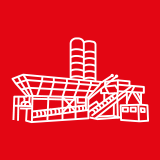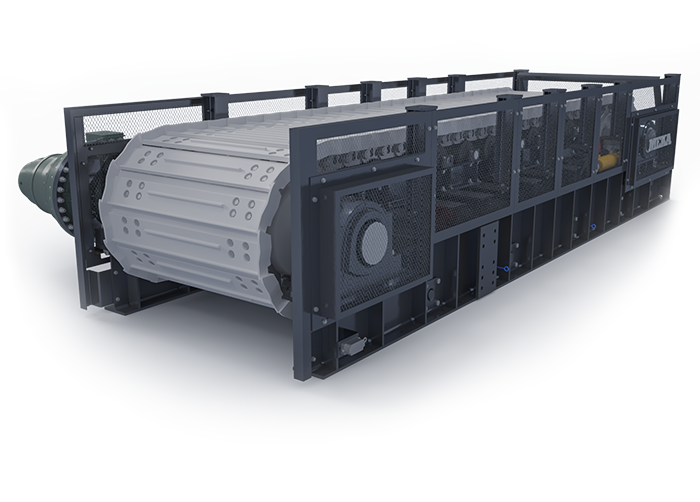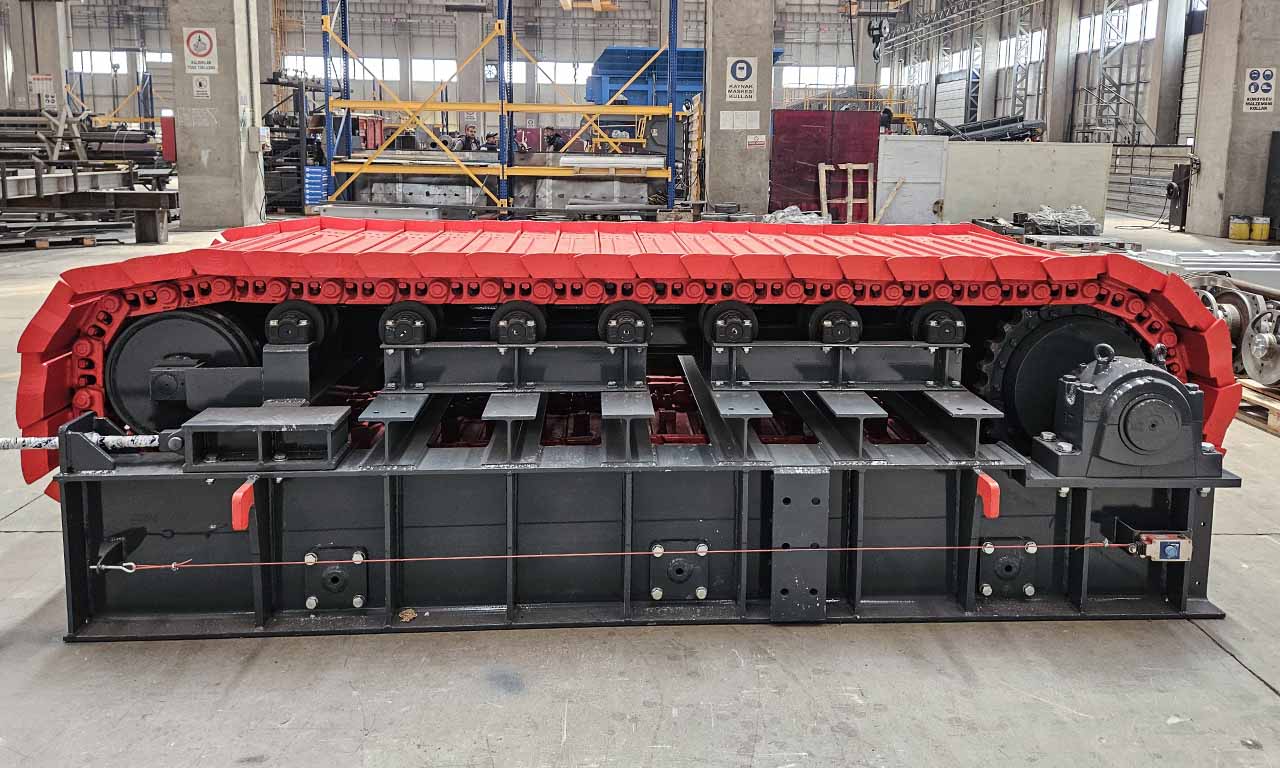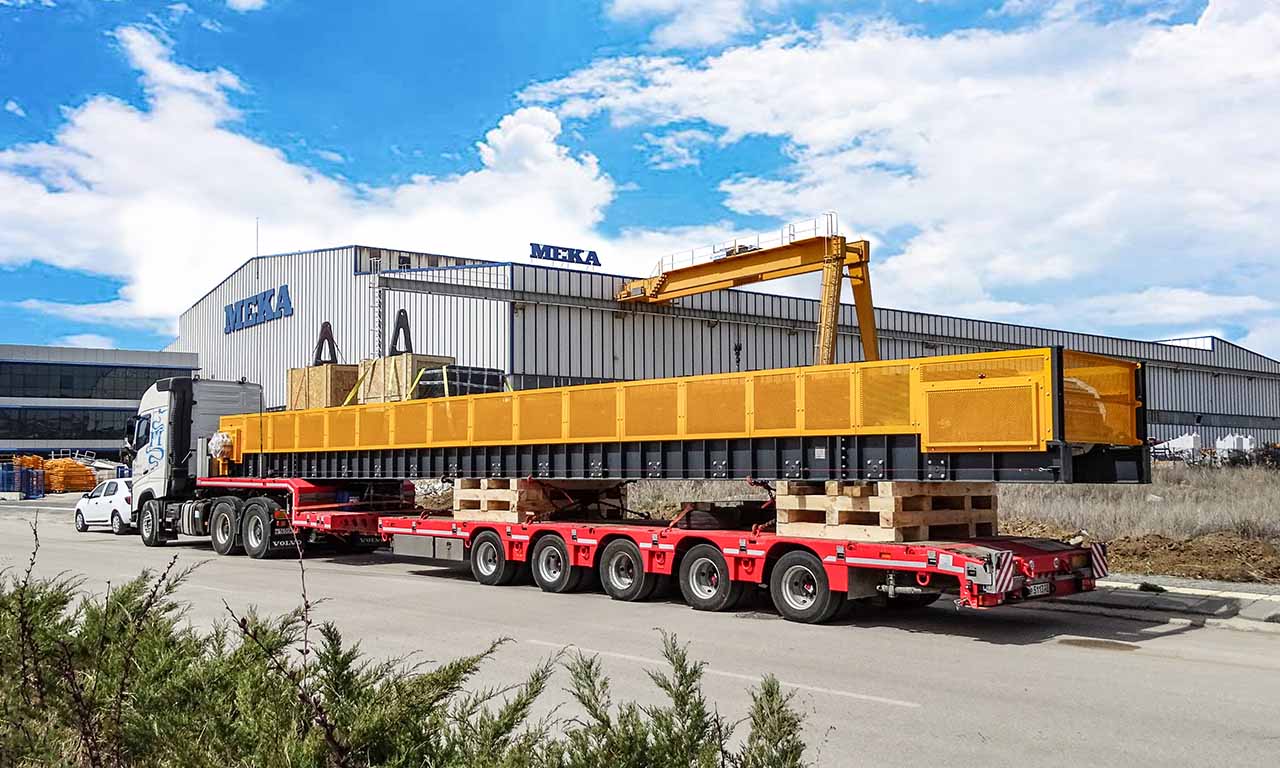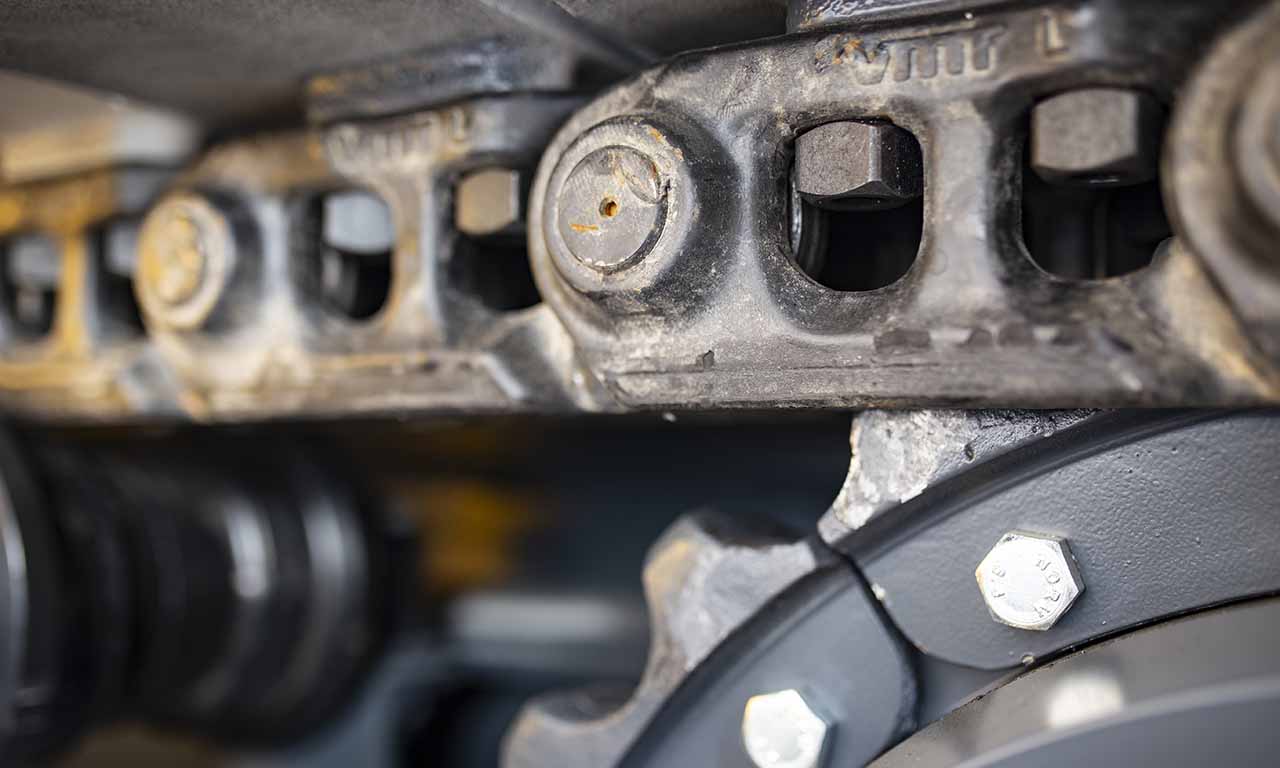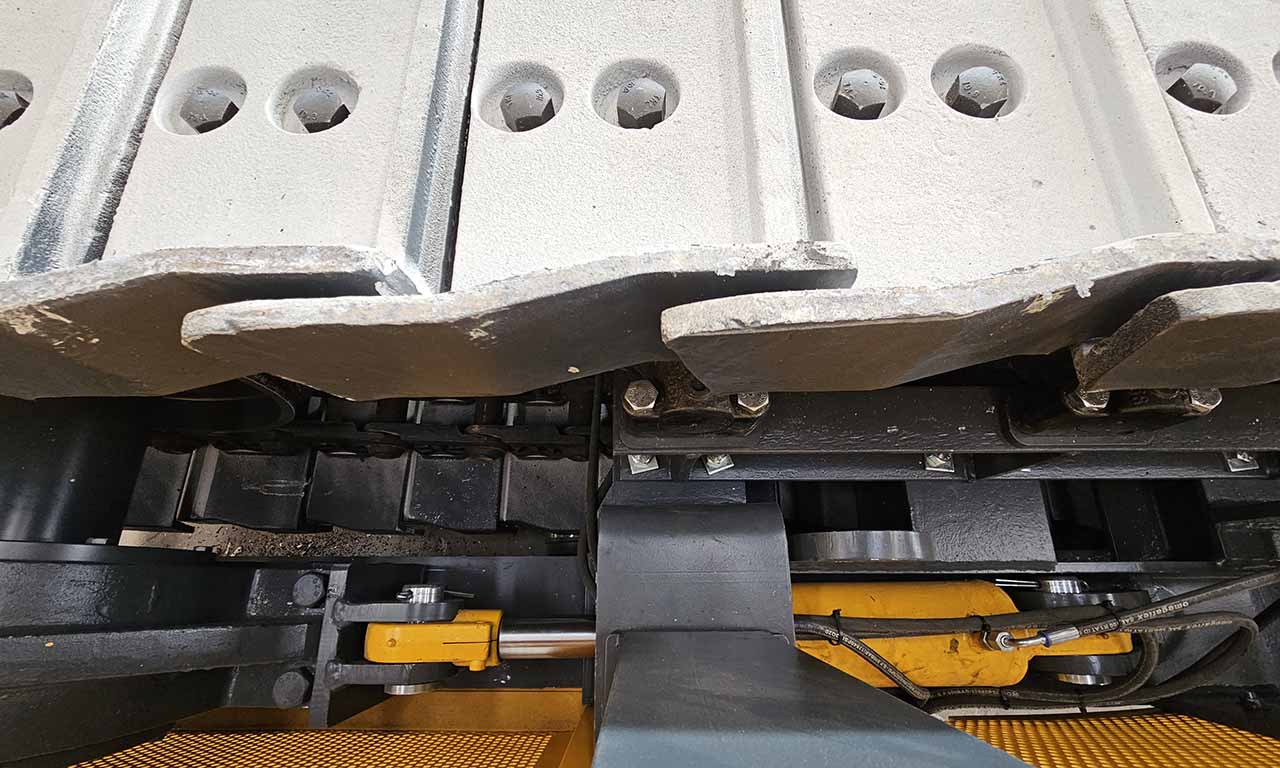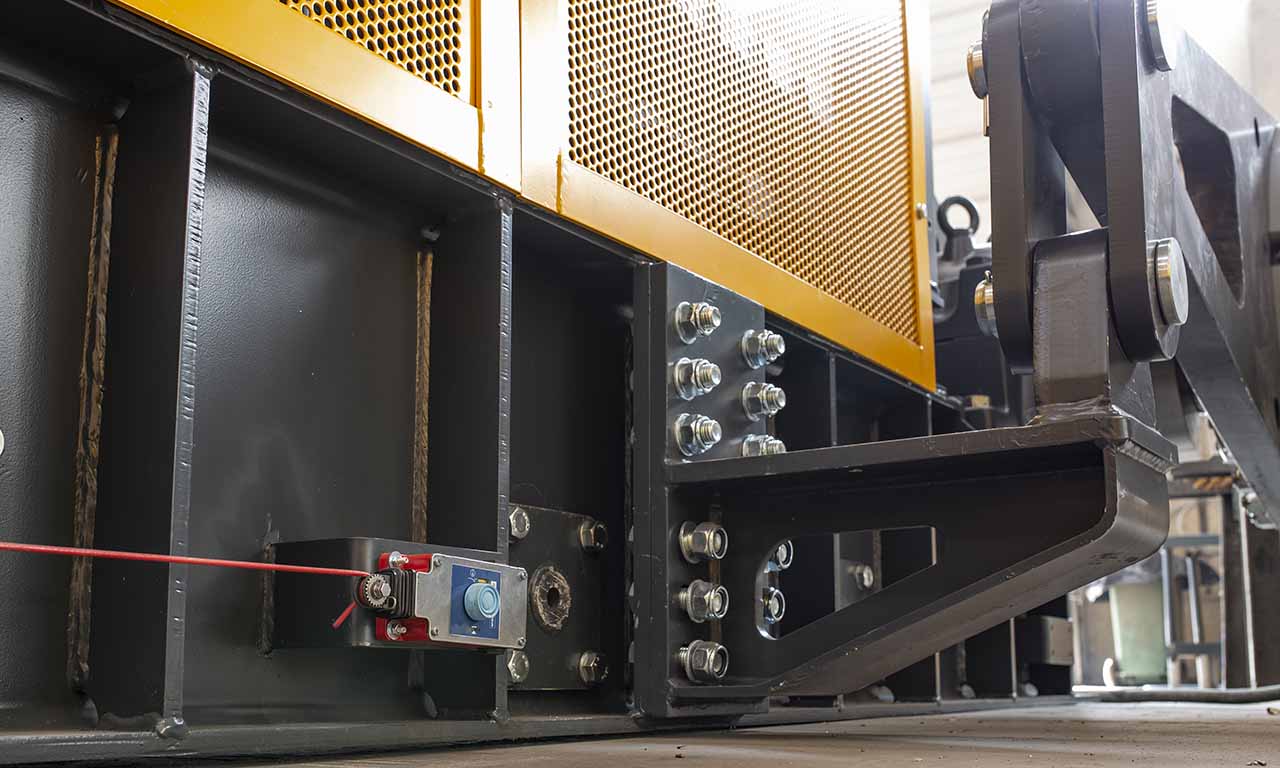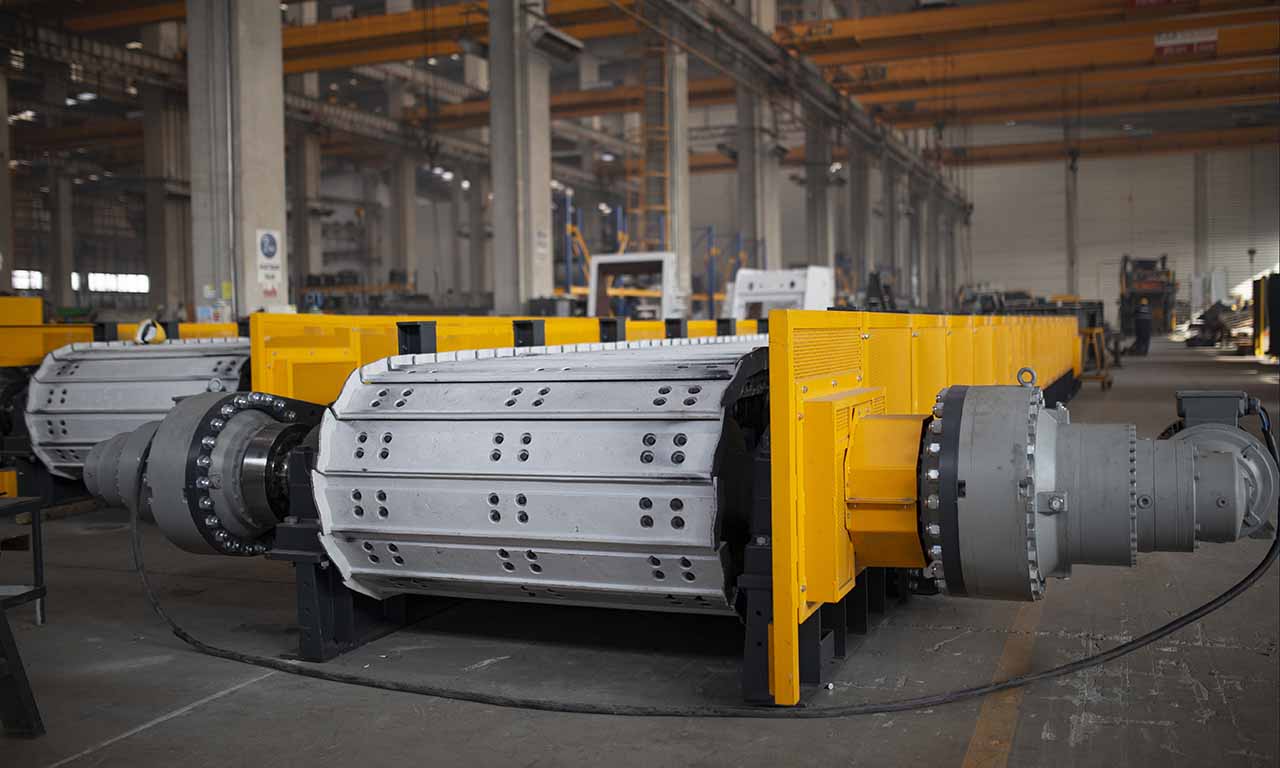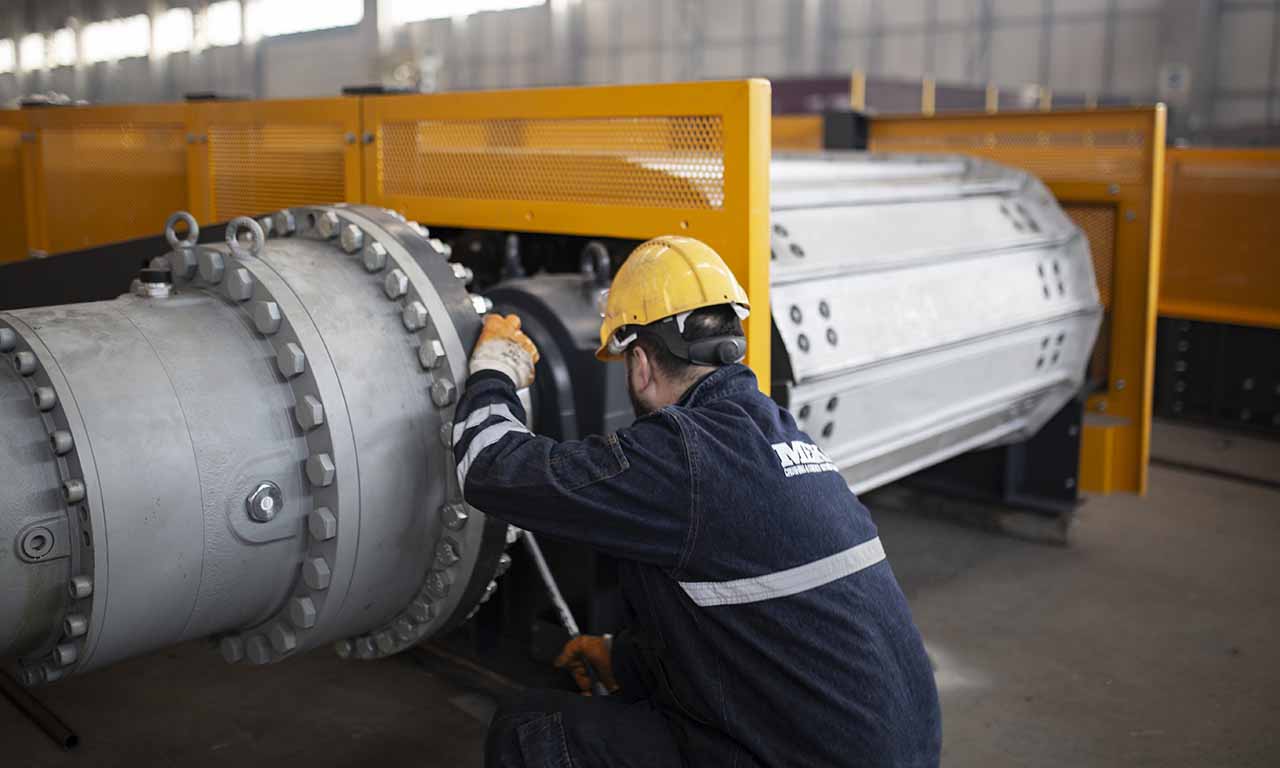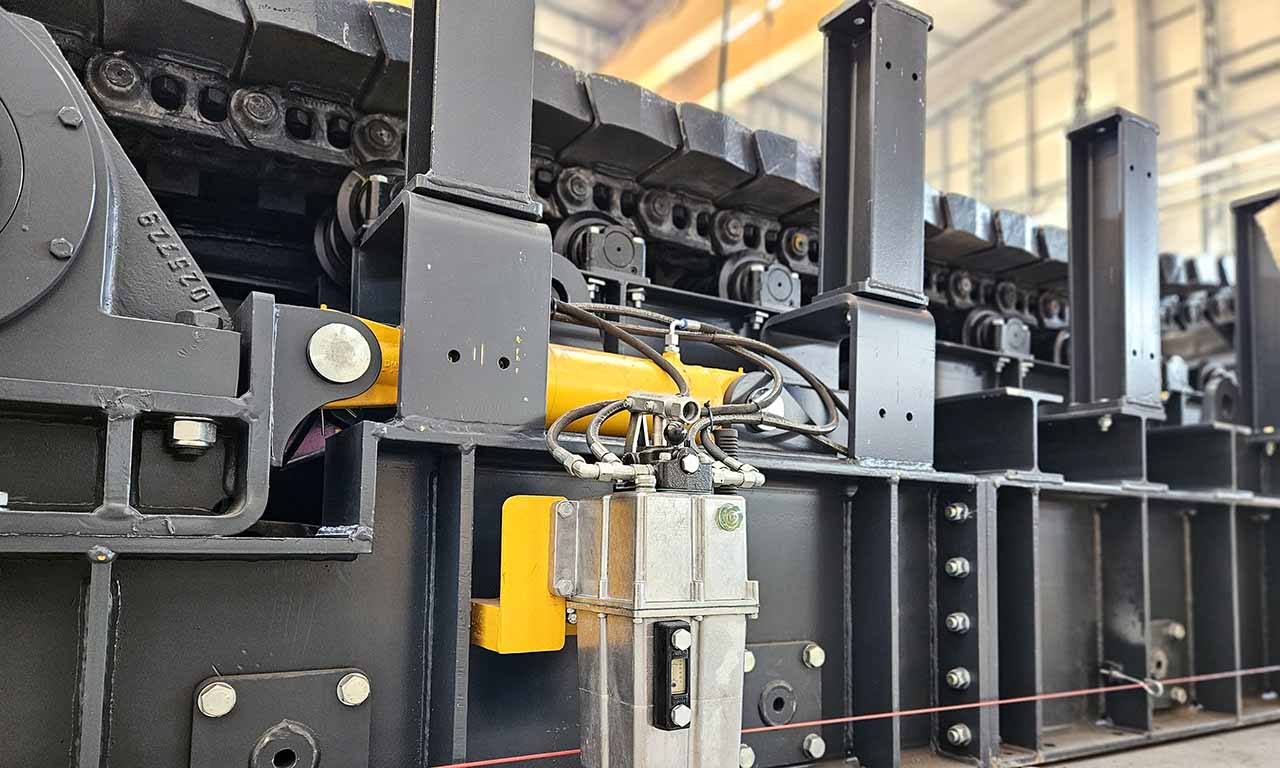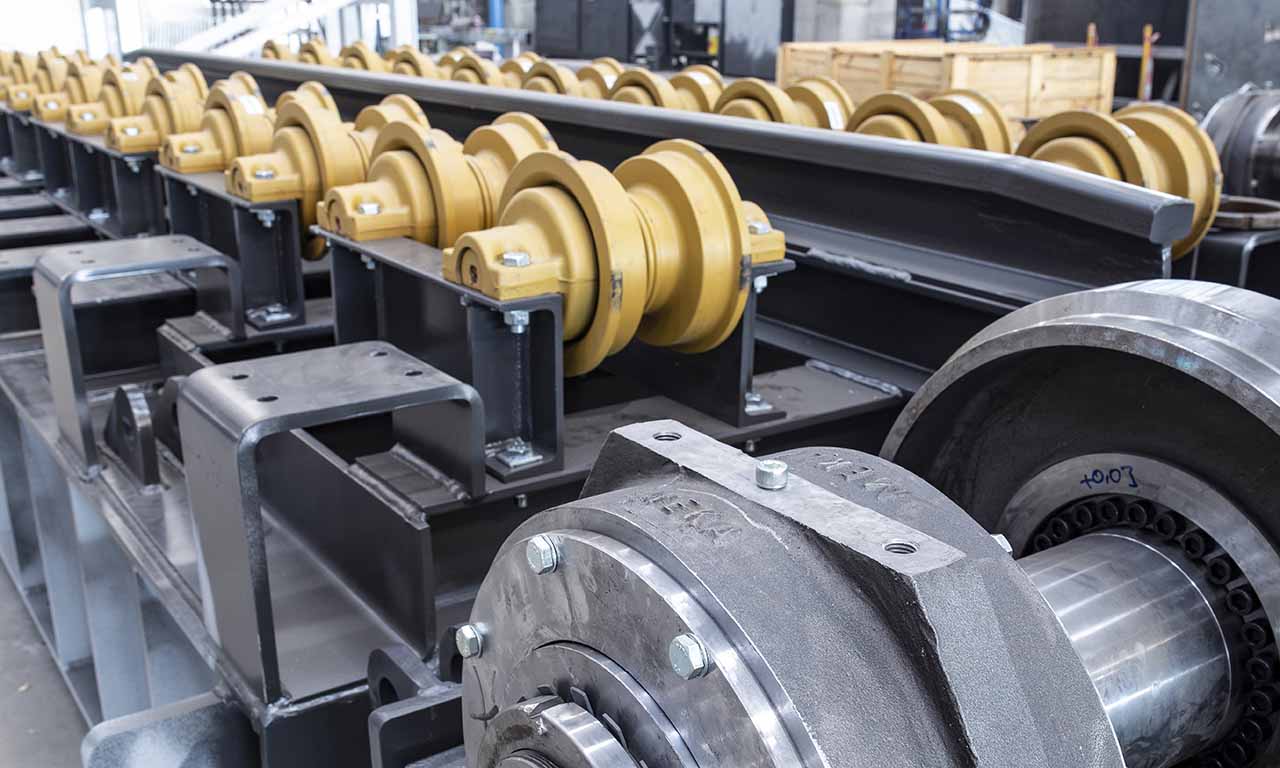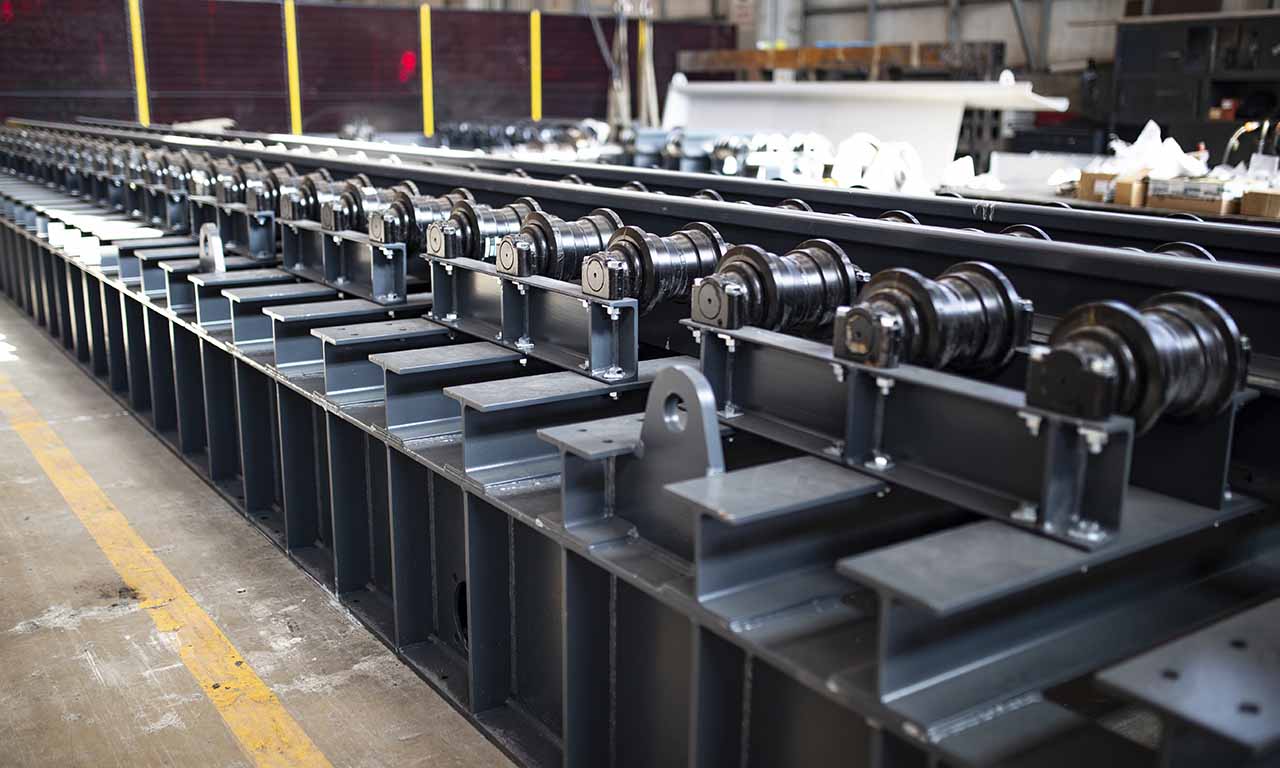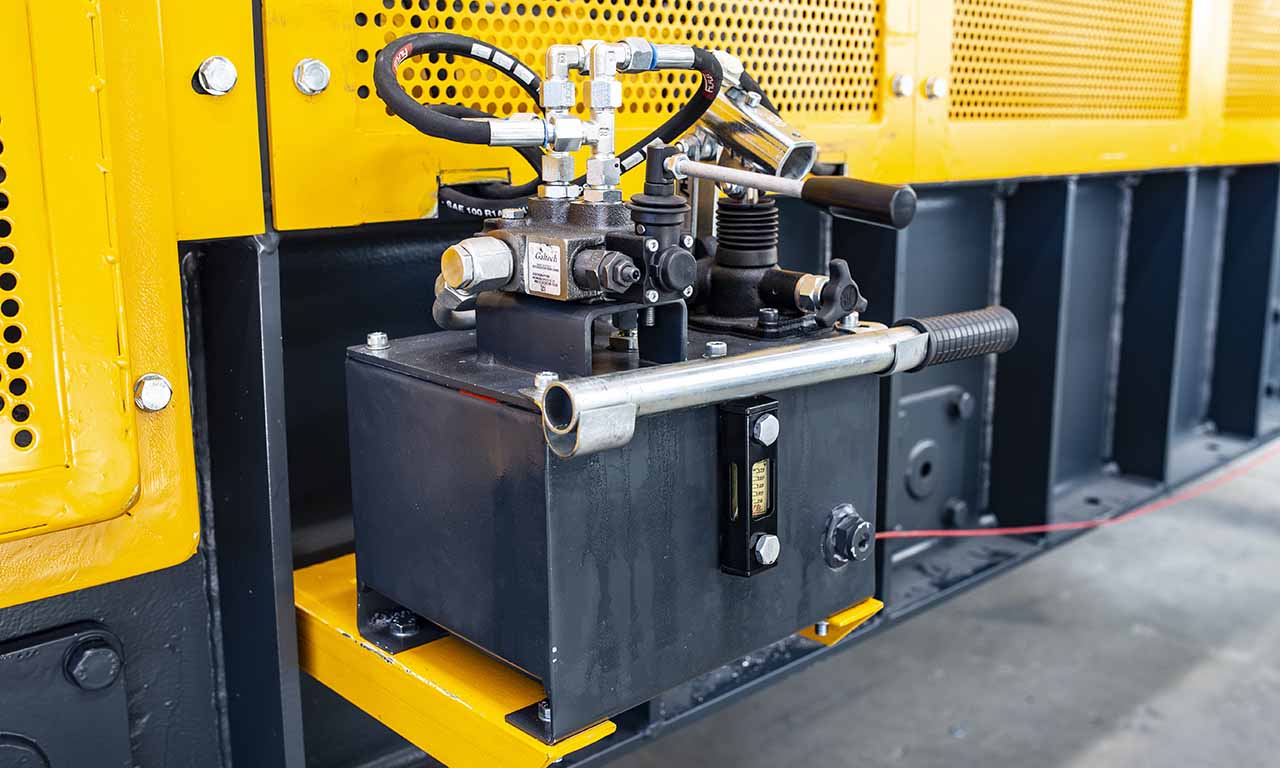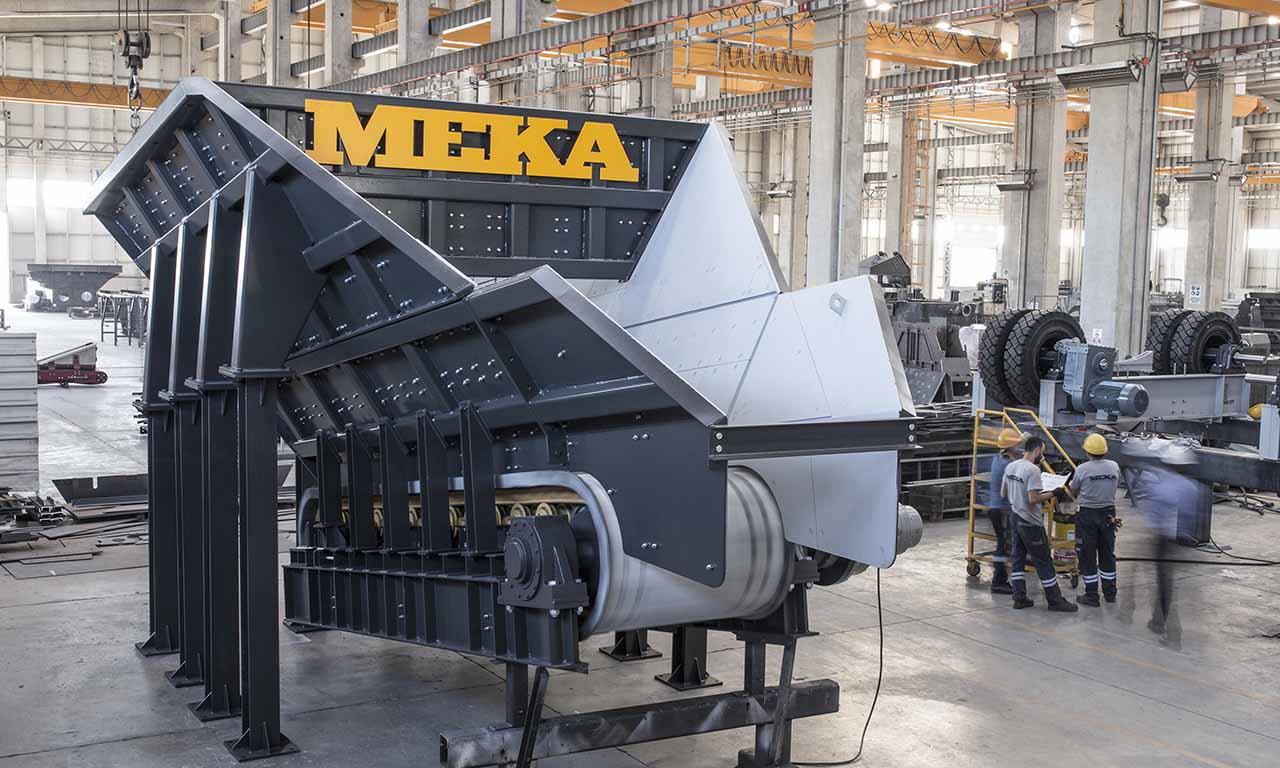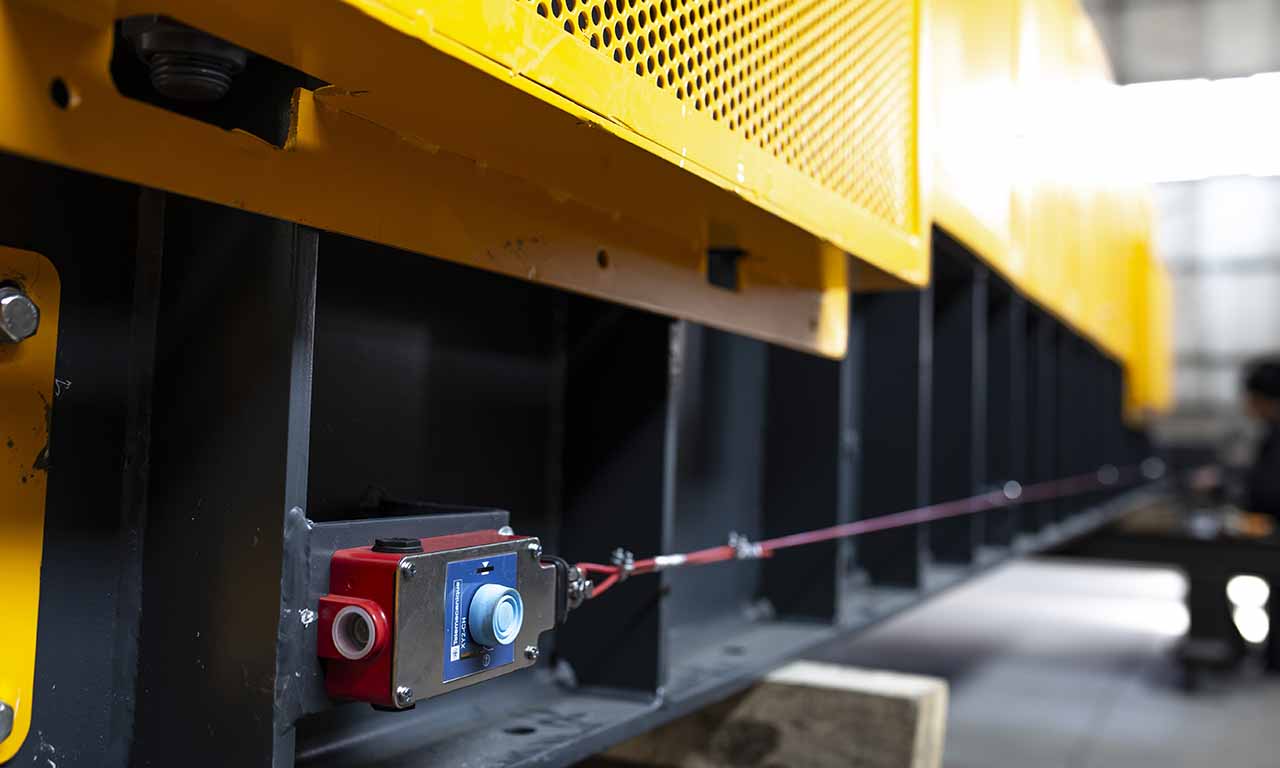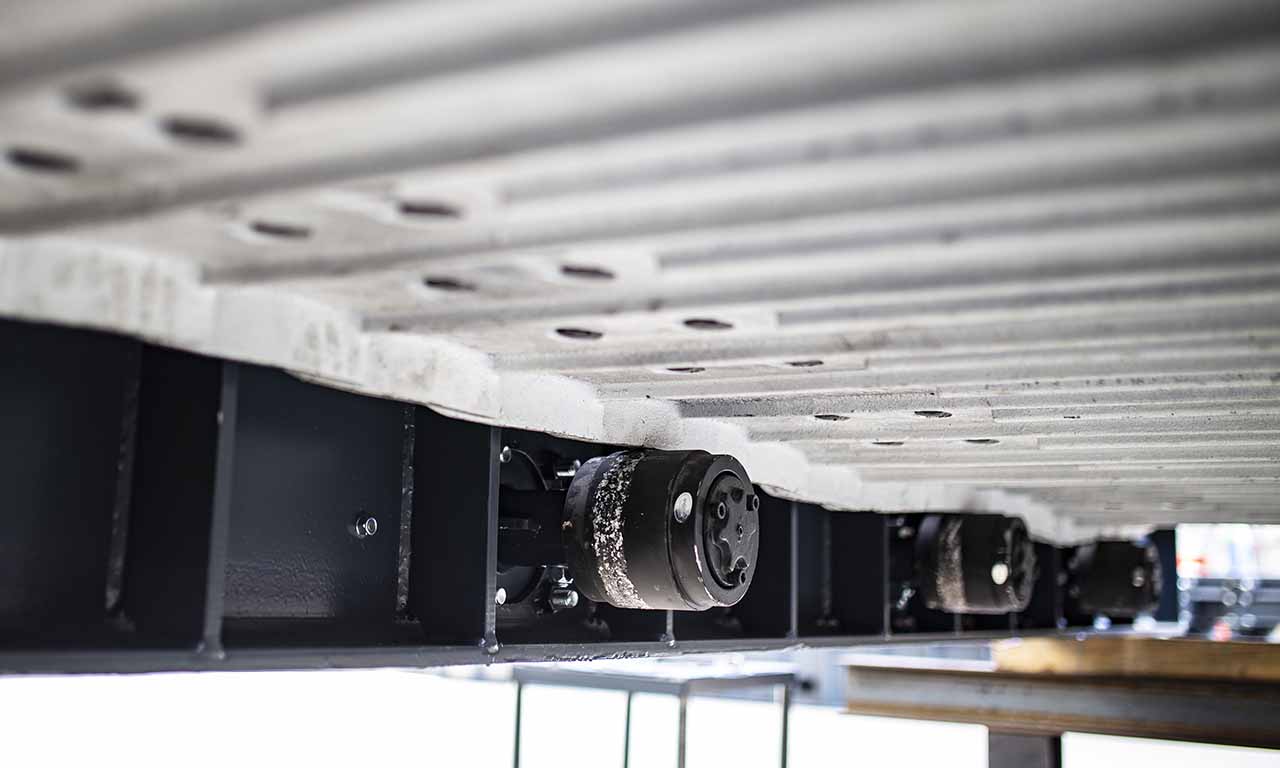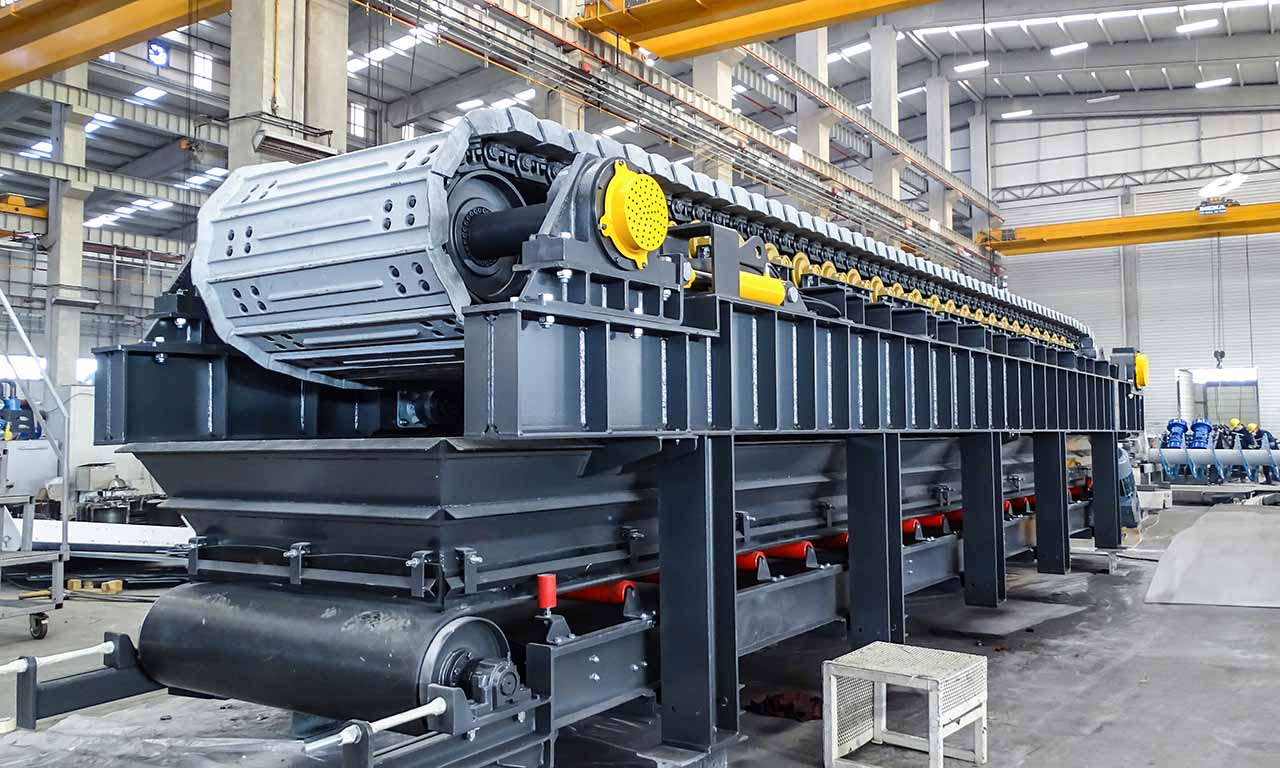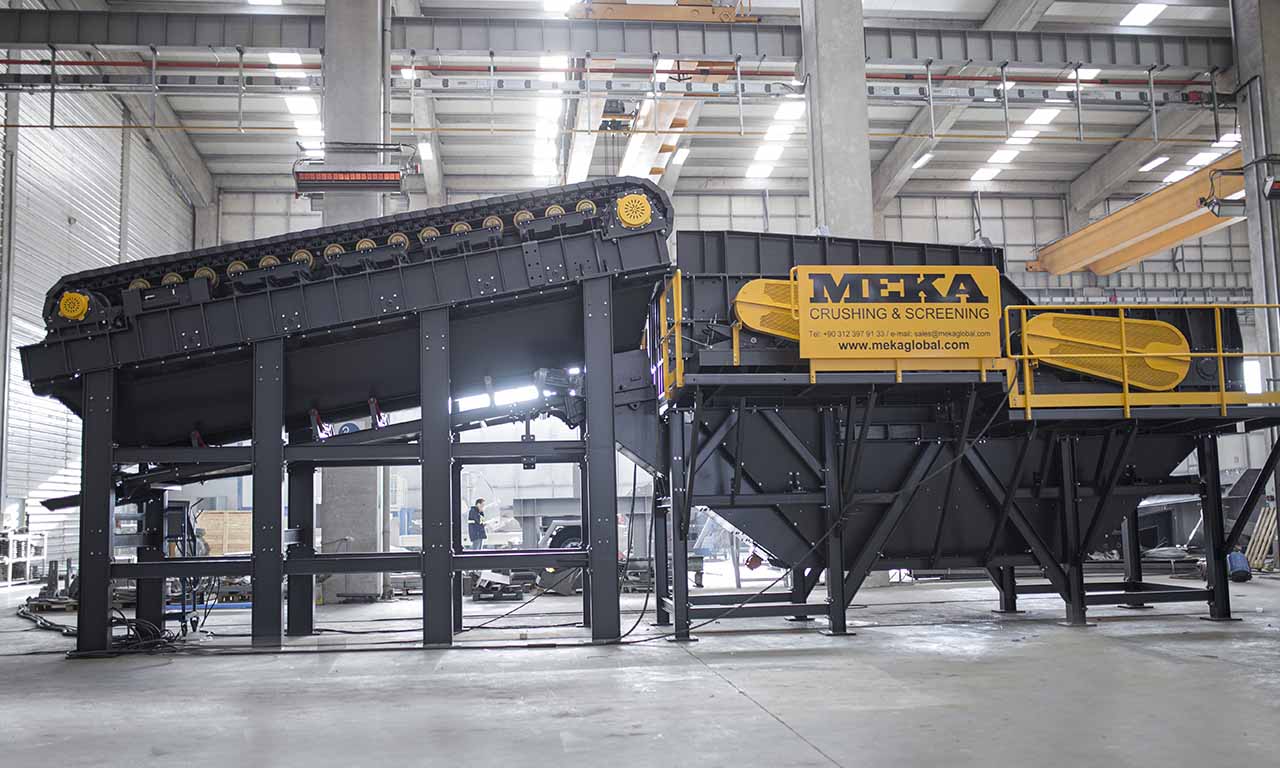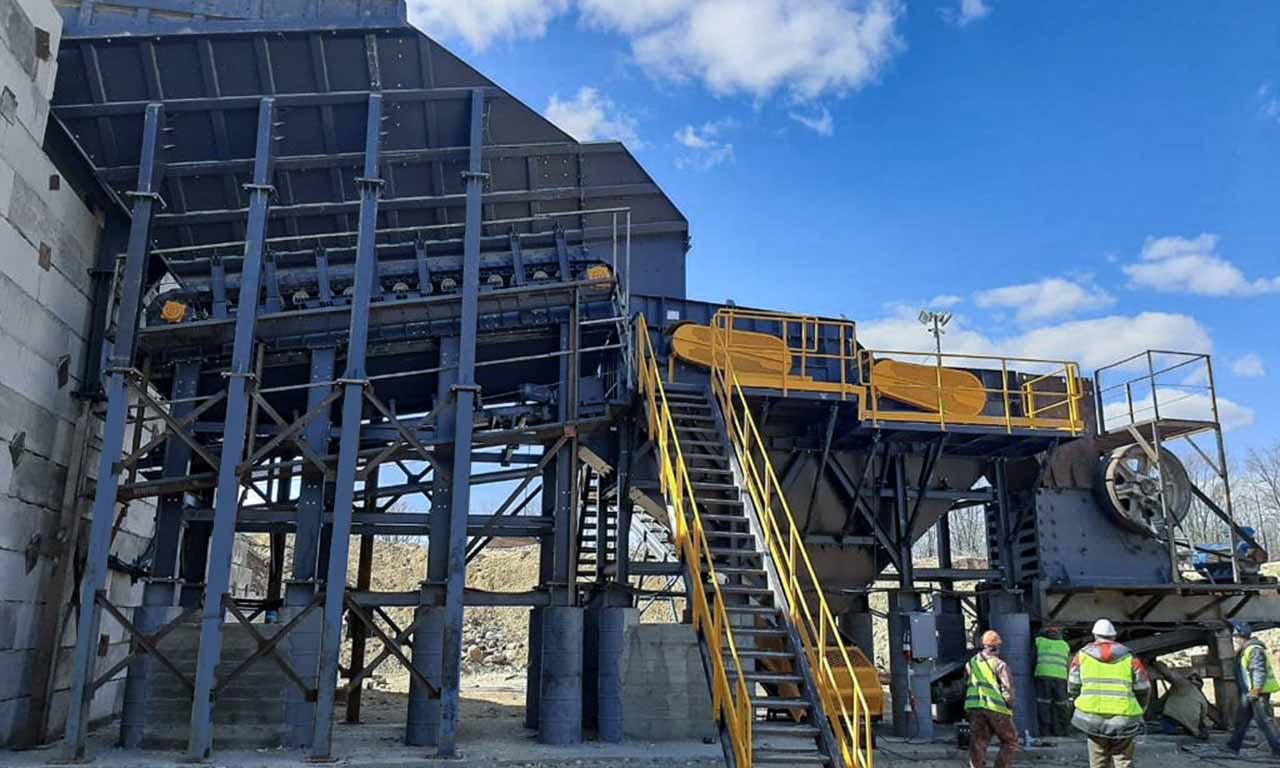Пластинчатый Питатель Галерея
Непревзойдённая производительность при подаче сложных материалов
В карьерах нередко встречаются залежи с материалом, создающим проблемы при подаче, особенно в дождливые зимние месяцы. Пластинчатые питатели являются идеальным решением для таких материалов. Несмотря на более высокие затраты по сравнению с другими типами питателей, их способность работать в любых условиях делает их предпочтительным выбором.
Для подачи материалов с высоким содержанием мелкой фракции, влаги и налипающих частиц оптимальным решением является установка Валкового грохот-питателя типа MWF или колосникового грохота после пластинчатого питателя. Это позволяет эффективно отделять нежелательные материалы до подачи его в дробилку и обеспечивать поступление чистого материала, что существенно повышает общую производительность системы.
Пластинчатые питатели MEKA разработаны специально для тяжёлых условий эксплуатации в горнодобывающей промышленности, при транспортировке руды, угля и инертных материалов. Усиленная рама, мощный привод, износостойкие плиты и цепная система обеспечивают исключительно долгий срок службы, предлагая решение, которое превосходит ожидания даже в самых жёстких условиях эксплуатации.
Применения
В открытых карьерах и при подземных горных работах — для транспортировки материала как на поверхности, так и под землей.
В операциях погрузки и разгрузки автосамосвалов и судов — как мобильный, компактный или стационарный компонент системы.
Разгрузка бункеров, подача материала на первичное или вторичное дробление (дробилки и грохоты)
Повышение эффективности установки за счёт регулярной подачи материала
Пластинчатый Питатель Технические Характеристики
| Ширина (мм) | *Производительность (mtph) | Максимальная подача (мм) | Скорость цепи (м/с) | |
| 900 | 110-350 | 380 | 0,1 - 0,30 m/s | |
| 1200 | 230-680 | 520 | 0,1 - 0,30 m/s | |
| 1500 | 350-1100 | 650 | 0,1 - 0,30 m/s | |
| 1800 | 600-1750 | 830 | 0,1 - 0,30 m/s |
*Показатели производительности приведены для: 50% глубины слоя, скорости цепи 0,1-0,3 м/с и для материала весом 1,6 т/м³ или 100 фунтов/фут³. Значения производительности являются ориентировочными и зависят не только от размера питателя, но и от наклона, фракционного состава подачи и т. д. Другие размеры также доступны по запросу
Хотите запросить коммерческое предложение или получить информацию о пластинчатый питатель?
Хотите получить коммерческое предложение на пластинчатый питатель MEKA?
Нужна установка с другими опциями и конфигурациями?
Хотите стать дилером пластинчатый питатель MEKA?
Давайте перейдём на следующий уровень. Свяжитесь с нами, заполнив форму.
Что такое Пластинчатый Питатель?
Состоящий из металлических палет (стальных или литых), Пластинчатый питатель работает по принципу ленточного конвейера. Питатель опирается на ролики и медленно вращается между ведущей и ведомой шестернями.
Типы Пластинчатый Питатель
Как Пластинчатый Питатель работать?
Преимущества использования Пластинчатый Питатель
Пластинчатые питатели могут быть изготовлены по индивидуальному заказу для решения широкого спектра задач.
Они обеспечивают лучший контроль подачи материала на последующее оборудование.
Пластинчатый Питатель процессы приложения
Варианты Пластинчатый Питатель MEKA
Опция ленточного конвейера (Dribble Conveyor)
Опция автоматической смазки
Опции электрических щитов
-Щит с прямым пуском, подключающий электродвигатель непосредственно к сети — экономичный вариант с минимальными требованиями к обслуживанию;
-Щит с частотным преобразователем (VFD), обеспечивающий плавный пуск и останов двигателя, гибкое управление скоростью и снижение энергопотребления.

